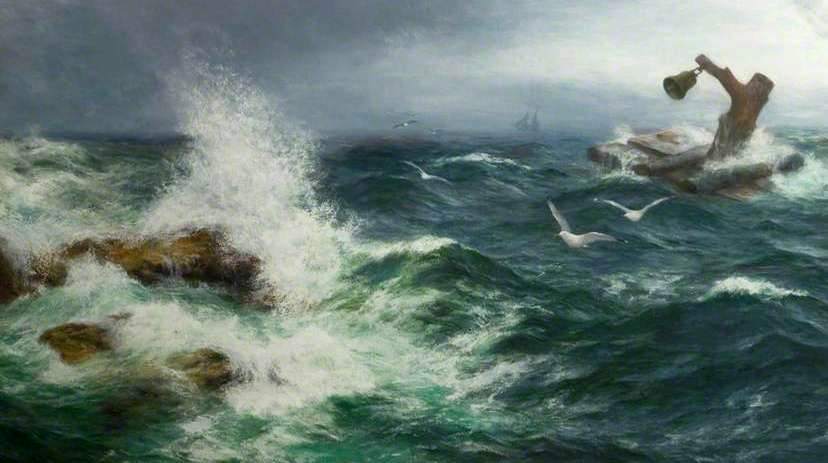About the Poet: Robert Burns was a Scottish poet and lyricist. He is generally thought to be the national poet of Scotland because he is the most widely read among all poets who have written in the Scots language. Burns has also written in English and a light Scots dialect, so that his poetry would be understood by an audience beyond Scotland as well. He has even written in standard English. The volume of works by Burns which came to be known as Poems, Chiefly in the Scottish Dialect came out in 1786. Also called the Kilmarnock volume, it contained much of his best writing.
In 1791, Burns was requested to write lyrics for The Melodies of Scotland, and he responded by contributing over 100 songs. He made a lot of contributions to George Thomson’s A Select Collection of Original Scottish Airs for the Voice and also to James Johnson’s Scots Musical Museum. In addition to making original compositions, Burns also collected folk songs from across Scotland, often revising or adapting them. While “Scots Wha Hae” has often served as an unofficial national anthem of the country, “Auld Lang Syne” is famous as a song of farewell. “Sweet Afton” is a poem about the Afton Water in Ayrshire, Scotland. The poem is made up of 6 stanzas. Each of these stanzas is again made up of 4 lines. Hence, the entire poem consists of 24 lines in total. This poem is written in the 1st person. Hence, we can assume that the speaker of this poem is the poet himself.
Sweet Afton Summary by Robert Burns
Stanza 1: In this stanza, the poet speaks directly to the Afton Water and asks it to flow leisurely through the tree-covered hills that surround it. He also says that he will praise the Afton Water in a song, presumably the one we are reading right now. The poet then turns his attention to his beloved, who is named Mary and who has fallen asleep on the banks of the Afton. So he asks the Afton to flow quietly and not make a sound so that his beloved may continue to dream without being woken up.
Stanza 2: In this stanza, the poet speaks to the various birds that are to be found in the vicinity of the Afton Water. He speaks first to the dove whose voice can be heard echoing throughout the valley in which the Afton is located. He then speaks to the blackbirds that whistle as they nestle among thorny briars. Lastly, he speaks to the lapwing whose high-pitched sound seems to him like a scream. All these birds are liable to waking up his beloved and so he asks them to stop making so much noise.
Stanza 3: In this stanza, the poet speaks again to the Afton Water. He tells the Afton that its surrounding hills are very high. He also says that the stream winds through those hills in a distinctly marked course. The poet walks about that region when the sun rises high in the sky at noon time in order to keep a watch over his flock of sheep as well as the cottage in which his beloved Mary lives.
Stanza 4: In this stanza, the poet shows his appreciation for the beauty of the region around the Afton Water. He says that the banks of the Afton and the valley surrounding it are soothing for the human senses. The valley is not bare though. It is covered with luxurious woods where wild flowers such as the primrose abound. The poet then describes how he and his beloved often spend their evenings over there with the birch tree providing them with shade and filling the environment with a lovely aroma.
Stanza 5: In this stanza, the poet talks about how the water of the Afton looks like a crystal when the sunlight falls on it. That same water moves gently and flows by the cottage in which Mary lives. Sometimes Mary goes to gather clusters of flowers from the banks of the Afton Water, and at such times, her feet tend to obstruct the flow of the water. But the water just playfully washes her feet. The sight of this delights the poet.
Stanza 6: This stanza is almost entirely similar to the first stanza. Here the poet asks the Afton Water to flow lazily and clearly says that this river itself is the subject of his poem. He ends the poem with the earnest request that the Afton Water flow soundlessly so as not to wake his beloved Mary from the dream she must be having as she is lying asleep.
Some online learning platforms provide certifications, while others are designed to simply grow your skills in your personal and professional life. Including Masterclass and Coursera, here are our recommendations for the best online learning platforms you can sign up for today.
The 7 Best Online Learning Platforms of 2022
- Best Overall: Coursera
- Best for Niche Topics: Udemy
- Best for Creative Fields: Skillshare
- Best for Celebrity Lessons: MasterClass
- Best for STEM: EdX
- Best for Career Building: Udacity
- Best for Data Learning: Pluralsight
















Thank you for this clear, lovely summary. I love this poem and Nickel Creek’s incapsulation of it so much that I walked down the aisle at my wedding to this beautiful lullaby. It’s great to understand it even better now!
I LOVE THE ANALYSIS.